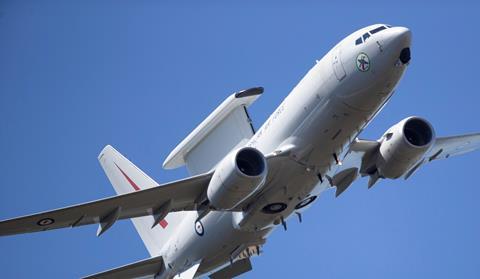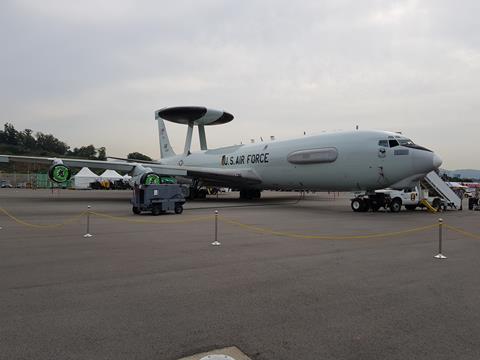The US Air Force (USAF) has selected the Boeing E-7 Wedgetail airborne early warning and control aircraft as the replacement for the E-3 Sentry Airborne Warning and Control System (AWACS).
“The Boeing E-7 is the only platform capable of meeting the requirements for the Defense Department’s tactical battle management, command and control and moving target indication capabilities within the timeframe needed to replace the aging E-3,” says the USAF.

US President Joe Biden’s budget request for the 2023 fiscal year includes $227 million worth of research, development, test and evaluation funds for the 737-derived E-7. A contract award is expected in FY2023, and a rapid prototype aircraft is planned for FY2027.
The US government’s 2023 financial year runs from 1 October 2022 to 30 September 2023.
Plans call for the funding of a second prototype in FY2024, followed by a production decision in FY2025.
Moreover, the president’s budget for the FY2023 fiscal year will call for 15 of 31 E-3s to be divested, with the funds saved to be channelled to its replacement.
Cirium fleets data shows that the USAF’s 31 E-3s have an average age of 43.2 years. The assets range in age from 38.5 to 50.2 years.
The USAF has long eyed the E-7 as a replacement for the 707-based E-3. In early February it issued a request for information seeking potential industry partners to deliver two production representative AWACS prototypes, including ground support and training systems, within five years after an expected FY2023 contract award.
In December 2021, USAF secretary Frank Kendall said that the service is looking for a stopgap AWACS aircraft until it can develop and field a space-based AWACS system. This followed remarks in September 2021 by USAF chief General Charles Brown that the force was was considering Wedgetail, and discussing it with the Royal Australian Air Force, which operates six examples.
In addition to Australia, South Korea and Turkey also operate the E-7. The UK Royal Air Force has three examples on order.

The E-7 is based on the 737-700 airliner. It carries a fixed Northrop Grumman active electronically scanned array radar antenna atop its fuselage instead of the rotating disc radar carried by the E-3.
USAF officials have publicly questioned the E-3’s suitability for the modern battlespace.
In March, Pacific Air Forces commander General Kenneth Wilsbach said the E-3 Sentry AWACS fleet suffers substantial obsolescence issues, and that of the four E-3s under his command, often all four are unable to get airborne.
“When it gets airborne, those sensors that we rely on with the E-3 aren’t really capable in the 21st century fight, especially against a platform like the [Chengdu] J-20 or something similar to that,” he said.
“It just can’t see those platforms far enough out to be able to provide an advantage to the shooters.”
He also added that he advocates the acquisition of the E-7.


























